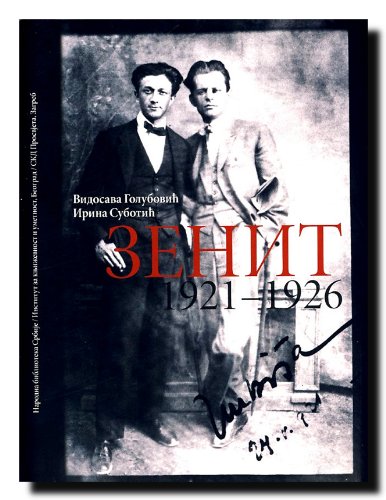Patrizia C. McBride: The Chatter of the Visible: Montage and Narrative in Weimar Germany (2016)
Filed under book | Tags: · aesthetics, art history, avant-garde, constructivism, dada, film, montage, narrative, neue sachlichkeit, photography, photomontage, weimar republic

“The Chatter of the Visible examines the paradoxical narrative features of the photo montage aesthetics of artists associated with Dada, Constructivism, and the New Objectivity. While montage strategies have commonly been associated with the purposeful interruption of and challenge to narrative consistency and continuity, McBride offers an historicized reappraisal of 1920s and 1930s German photo montage work to show that its peculiar mimicry was less a rejection of narrative and more an extension or permutation of it—a means for thinking in narrative textures exceeding constraints imposed by “flat” print media (especially the novel and other literary genres).
McBride’s contribution to the conversation around Weimar-era montage is in her situation of the form of the work as a discursive practice in its own right, which affords humans a new way to negotiate temporality; as a particular mode of thinking that productively relates the particular to the universal; or as a culturally specific form of cognition.”
Publisher University of Michigan Press, 2016
Creative Commons BY-NC-ND 4.0
ISBN 9780472053032, 0472053035
x+236 pages
Aleksei Gan: Constructivism (1922–) [RU, EN]
Filed under book | Tags: · aesthetics, avant-garde, constructivism, design

Through his co-founding with Varvara Stepanova and Alexander Rodchenko of the First Working Group of Constructivists (1921–4), and his publication of Constructivist principles in his book Konstruktivizm (1922), the Russian designer and art theorist Aleksei Gan played a leading role in the development of the Constructivist aesthetic. In his interpretation of Constructivism, which he saw as the creative counterpart to the socio-political tasks of the Revolution, Gan called for creative activity to be politicized to the maximum and for its artistic component to be minimized. His slogans included “we declare uncompromising war on art” and “death to art”, which he attempted to encapsulate in his designs for portable book kiosks, folding street stalls, exhibition posters and clothing, where the objects were reduced to the most simple and functional forms.
Konstruktivizm [Конструктивизм]
Publisher Tverskoe izdatel’stvo, Tver, Summer 1922
70 pages, 23.5 х 19.9 cm
Edition of 2000
via Andrey Kurilkin
Konstruktivizm (Russian, 1922, 23 MB)
Constructivism (English, trans. of extracts by John Bowlt, 1974)
More about Constructivism and Aleksei Gan.
Comment (1)Vidosava Golubović, Irina Subotić: Zenit, 1921-1926 (2008) [Serbian, English]
Filed under book | Tags: · art, art history, avant-garde, constructivism, dada, yugoslavia

A monograph about the Yugoslav magazine Zenit whose founder and editor Ljubomir Micić was the main progenitor of the avant-garde in Croatia and Serbia during the first half of the 1920s.
“Through the relentless publication of manifestos and statements in issue after issue of Zenit, Micić gave shape to a specifically Yugoslav avant-garde aesthetics: Zenitism, counterpointing the redemptive force of the Balkanic-Slavic ‘barbarogenius’ over against the decadence of Western Europe. Over the course of its five years of publication, Zenit accreted successive influences from international Expressionism, Futurism, Dada, and Constructivism to advance its cultural-political goals. Its political orientations were similarly idiosyncratic, eclectic, and fluctuating: a blend of Serbian nationalism, pan-Slavism, pacificism, Bolshevism (though often celebrating the anti-Western Russian character of Lenin and Trotsky rather than their Soviet politics), mystical new-age thought, internationalism, and anarchism. Zenit managed to garner a significant degree of international attention both for its solicitation of work for publication and for its subsidiary activities, such as the First Zenit International Exhibition of New Art held in Belgrade in April 1924. The example of Zenit and the aesthetic ideology of Zenitism inspired other important publications across the region, such as the Hungarian-language journal Út and the Slovenian journal Tank, as well as individual practitioners of avant-garde such as the Dadaist poet Dragan Aleksić and the Slovenian cubo-futurist Srečko Kosovel.” (Source)
The book includes two lead essays by Vidosava Golubović and Irina Subotić in English translation (pp 469-484).
Publisher Narodna biblioteka Srbije, Belgrade; Institut za književnost i umetnost, Belgrade; and SKD Prosvjeta, Zagreb, 2008
ISBN 867035182X, 9788670351820
516 pages
via Dubravka/MoW
Publisher (NBS)
Publisher (IKUM)
WorldCat

